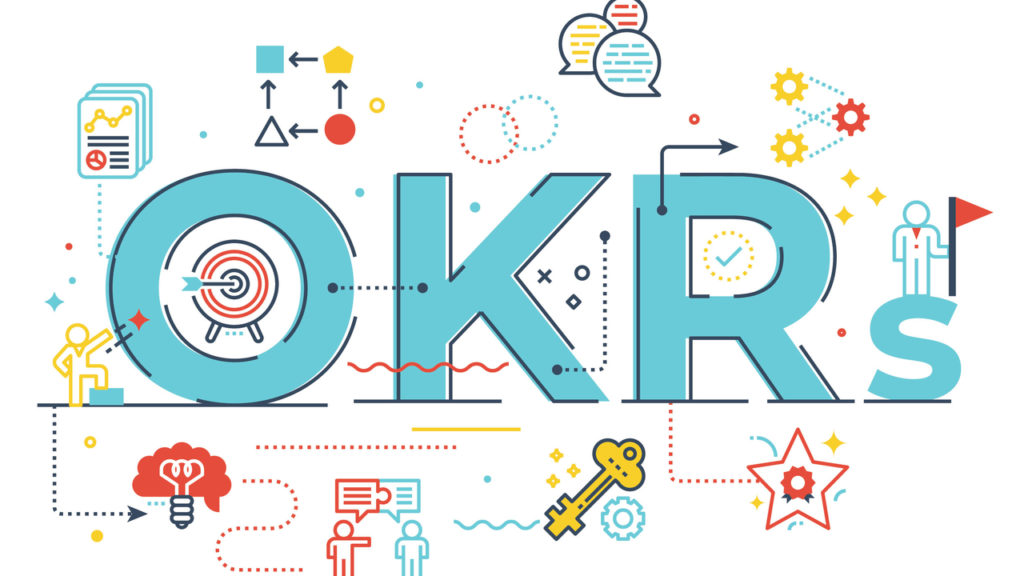
Do you know everything you need to know about OKRs? OKRs, which stands for Objectives and Key Results, is a widely popular process that companies use to link organizational and team goals to measurable outcomes. OKRs help to answer these two questions:
- Where do we want to go?
- How will we measure our efforts to get there?
To help you achieve your objective of learning more about Objectives and Key Results, we’ve rounded up our best articles, guides, and blog posts below.
Here’s Everything You Need to Know About OKRs
A Guide to OKRs: Mastering Objectives and Key Results
The OKRs process has been widely embraced by companies around the world because it is easy to understand and practice at scale. If you’re new to OKRs, or want to refresh your understanding, start with this comprehensive guide. You’ll learn:
- How to define an Objective
- How to select effective Key Results
- The benefits of using OKRs
- And more!
OKRs vs. KPIs: Understanding the Differences
OKRs, KPIs, oh my! Although it might seem as though OKRs and KPIs are two different methods that organizations must choose between, “OKRs vs KPIs” is a bit of a misnomer, as they are actually quite complementary. Most organizations will benefit from using them together, employing one or the other depending on what they need to measure or monitor.
Learn how to effectively utilize OKRs and KPIs to assess your performance in this guide.
OKRs: Objectives and Key Results
As organizations start to evolve the way they plan, budget, and fund they also must change the way they measure the delivery of value. In this changing world of work, measurement of products and value streams tend to break down into two fundamental categories of metrics: KPIs and OKRs. This blog explains how OKRs and KPIs are utilized in Lean-Agile budgeting to align the way teams plan, fund, execute, and measure their work.
Examples of OKRs: Real World OKRs You Can Use Right Now
Reviewing examples of OKRs (Objectives and Key Results) can be an excellent source of inspiration for writing your own. In this article, we’ll walk through several real-world examples of OKRs to illustrate how you might use this powerful tool to drive innovation in your own organization.
How to Write OKRs: What to Avoid and What Really Works
A blog post titled “Everything You Need to Know About OKRs” wouldn’t be complete without a guide that explains the dos and don’ts of writing them. It may surprise you to learn that typical goal-setting processes can undermine your OKR efforts, especially when you’re learning how to write effective OKRs. It’s easy to make mistakes when teams have experience with more traditional goal-setting systems.
Here are some mistakes to avoid when developing OKRs.
OKR Software: What It Is and What to Look For
One major challenge for many organizations is that while the OKRs framework is incredibly helpful for brainstorming and defining goals, it can be difficult to keep those goals top of mind without a way to track them. OKR software can eliminate a lot of the headaches and technical bottlenecks caused by planning, tracking, and measuring OKRs with spreadsheets or general-purpose HR tools.
Choosing an OKR Solution
As more companies are making the project to product shift and scaling Agile throughout their organization, OKRs are playing an essential role in the success of a company’s transformation journey. Choosing the right OKR solution is an integral step in solidifying that role and ensuring that your organization finds success with this process.
In this guide, you’ll discover the five must-have capabilities you need for planning, tracking, and measuring Objectives and Key Results successfully.
Learn How Planview Enables OKRs
Talking OKRs with Planview’s CPO Patrick Tickle
Leading up to the release of OKRs in Planview AgilePlace, we sat down with Planview Chief Product Officer Patrick Tickle to talk about OKRs. Here’s what he had to say about the recent “renaissance” of OKRs, and how Agile businesses are using them to fuel their growth.
Leveraging OKRs to Unlock Agility
Successful execution of enterprise strategy requires alignment across Agile teams. For this, countless businesses are turning to the Objectives and Key Results (OKRs) goal-setting framework for help. Watch this pre-recorded webinar for an in-depth discussion of how OKRs can help to scale Agile beyond the team level, and how to leverage the OKR capabilities within Planview AgilePlace to make it happen!
AgilePlace: Objectives and Key Results Demo
OKR capabilities should be closely connected to where the work is planned, tracked, and managed. When OKRs are isolated from the work being done, it’s easy to lose track of what objectives you’re trying to achieve. It should also be easy to use.
Learn how the Objectives and Key Results (OKRs) capabilities within Planview AgilePlace™ can help your organization foster an outcome-based approach to strategy and delivery and establish clear line of sight into connected work, from the Portfolio to the teams, all within a single solution.
Achieve More, Together with OKRs
And there you have it: Everything you need to know about OKRs! OKRs provide a better, more modern way to support some of the central ideas of scaling Agile, make the project-to-product shift, and focus on delivering value.
Whether you want to adopt the OKR framework or expand your use of it, the OKR capabilities in the Planview platform can help maintain clarity and focus on what needs to be achieved – and get it done. For more information about the new OKR capabilities within Planview AgilePlace, watch the on-demand demo here.




